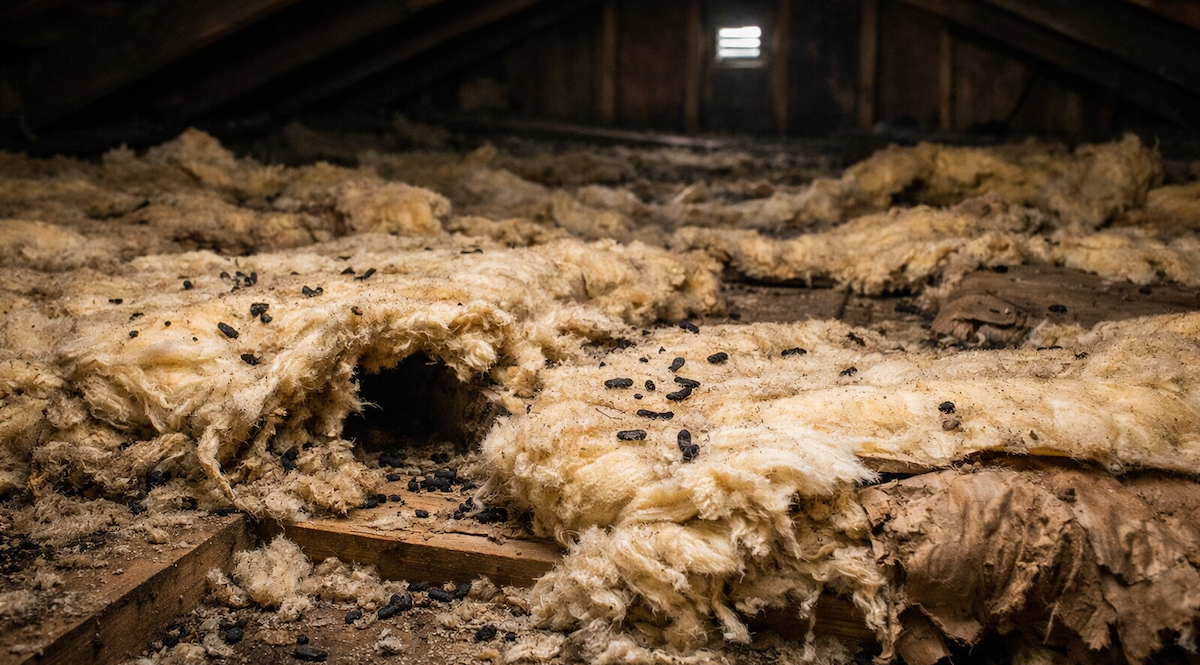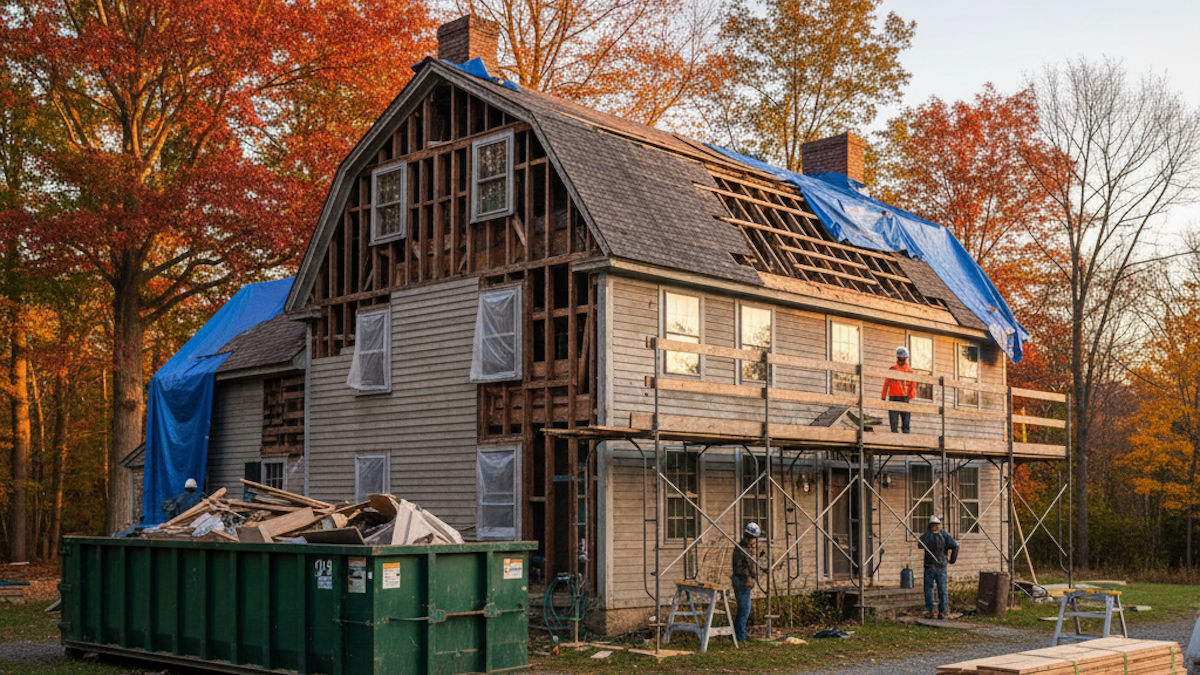How Much Will Insulation Cost? Use Our Calculator to Find Out

“How much does insulation cost?”
That’s like asking how much groceries cost. Depends if you’re feeding one person or a family of five — and whether you’re shopping at Costco or the place with $9 organic butter.
Same deal with insulation. The cost depends on a few key things: how big your space is, what kind of insulation you want, and how much R-value you need to meet code (spoiler: here in Connecticut, it’s usually more than you think).
That’s exactly why we built this calculator — to cut through the fluff and give you a ballpark number without calling three contractors, sitting through a pitch, or guessing what “reasonable” means.
Just plug in your square footage, choose the insulation material you're thinking about, and boom: you’ll get a high-low estimate plus our recommended R-value based on Connecticut’s climate zone. Simple. Fast. No sales pressure.
Not perfect, but it’ll get you within striking distance — and help you feel a whole lot more prepared when it’s time to pull the trigger.
- What impacts the cost of insulation
- Average insulation costs by material
- What r-value do i actually need in Connecticut?
- Insulation pricing calculator
What Impacts the Cost of Insulation?
The cost of insulation is impacted by material type, home size, installation method, and local labor rates. Spray foam costs more than fiberglass. Larger homes require more material. DIY installations are cheaper than professional ones. Regional prices and energy efficiency standards also influence total cost.
Insulation pricing isn’t one-size-fits-all. It’s more like building a sandwich at the deli — you’ve got options, and every choice tweaks the total.
Here’s what drives the cost:
Square Footage
Bigger space = more material = more money. No surprises here. Whether you’re insulating a 1,200 sq ft cape or a 3,000 sq ft colonial, size is step one.
Insulation Type
Not all insulation is created equal — or priced the same.
- Fiberglass batts are the budget option.
- Cellulose is solid for retrofits and old homes.
- Spray foam? Cadillac-level performance, Cadillac-level price.
Access & Labor
An open attic is easy money. A finished basement with tight crawlspaces and 1940s construction quirks? That takes longer and costs more. Labor matters.
Target R-Value
Think of R-value as insulation’s horsepower. The higher the number, the better it resists heat flow — but getting there might mean thicker batts, extra layers, or pricier materials. Connecticut typically calls for R49–R60 in attics, so plan accordingly.
Local Pricing Reality
Costs in Connecticut aren’t the same as down South. We’ve got higher labor rates, stricter codes, and longer winters. This calculator reflects real local pricing — not wishful thinking.
Quick Breakdown: Average Insulation Costs by Material
Here’s a no-nonsense look at what different insulation types typically cost in Connecticut — including materials and labor:
Insulation TypeAvg. Cost per Sq Ft (Installed)Best ForFiberglass Batts$0.75 – $1.50New construction, open wallsBlown-In Cellulose$1.00 – $2.00Attics, retrofits, older homesSpray Foam (Closed Cell)$3.00 – $5.00High-performance air sealing, rim joists, vaulted ceilings
Quick notes:
- Prices include professional installation.
- Fiberglass is cheap but doesn’t air seal — you’ll need separate sealing.
- Cellulose hits the value/performance sweet spot for most homes.
- Spray foam is premium, but sometimes the best bang for your buck in tricky or high-performance spots.
Our calculator lets you compare these options side by side. Try a few and see what fits your goals — and your budget.
How to Use the Insulation Cost Calculator
We built this thing to save you time. Here’s how it works:
1: Enter Your Square Footage
No need for blueprints. Just estimate the size of the space — attic, walls, basement, whatever you’re insulating.
2: Choose Your Insulation Material
Pick between Fiberglass, Cellulose, or Spray Foam. Not sure? Try all three and see how the estimate shifts.
3: Get Your Estimated Cost Range
You’ll get a high-low price range based on real Connecticut averages. It’s not exact, but it’s close enough to make smart decisions.
Check Your Recommended R-Value
Based on Connecticut building code and climate, we’ll show you what R-value makes the most sense. No Googling required.
What R-Value Do I Actually Need in Connecticut?
R-value measures how well insulation resists heat flow. Higher R = better performance. Simple.
Here’s what you typically need in Connecticut:
Pro tips:
- Attics are your best ROI. Cheapest to insulate, biggest energy savings.
- More isn’t always better. Jumping from R0 to R49? Big savings. R49 to R60? Diminishing returns.
- Not sure what you’ve got? We’ll pop our heads up there and take a look — no charge.
Insulation Pricing Calculator
Real Talk: This Is a Starting Point, Not a Final Quote
Let’s be honest — this calculator isn’t magic. It’s not crawling into your attic or factoring in 1940s wiring, moisture issues, or weird roof angles. But it’s damn useful.
Here’s what it’s great at:
- Giving you a realistic price range
- Helping you compare materials
- Taking the guesswork out of R-value targets
- Making you a smarter buyer
Here’s what it doesn’t do:
- Replace a site visit
- Account for tricky install conditions
- Include air sealing or ventilation upgrades
But it does put you ahead of 90% of homeowners. And that’s no small thing.
FAQs about the Cost of Insulating your Home
Can I combine different types of insulation in my home for better performance?
You can combine different types of insulation to improve performance. Use spray foam for air sealing and fiberglass batts for thermal insulation. This hybrid approach increases energy efficiency and reduces costs. Always check material compatibility and building codes before combining insulation types.
How long does it typically take to install insulation in an average-sized home?
Installing insulation in an average-sized home typically takes 1 to 2 days. The timeline depends on the type of insulation, home layout, and whether old insulation needs removal. Spray foam takes longer than fiberglass batts. Professional crews complete most standard jobs within a weekend.
Are there any rebates or incentives available for upgrading insulation in Connecticut?
Connecticut offers rebates and incentives for insulation upgrades through the Energize Connecticut program. Homeowners can receive up to $1.70 per square foot for insulation improvements. Incentives vary based on income, project type, and energy audit results. Pre-approval and professional installation may be required.
How does proper insulation impact indoor air quality?
Proper insulation improves indoor air quality by reducing air leaks, blocking pollutants, and controlling humidity. It prevents outdoor contaminants from entering and minimizes mold growth by maintaining consistent temperatures. Sealing gaps also reduces allergens and dust, creating a cleaner and healthier indoor environment.
What maintenance does insulation require over time?
Insulation requires minimal maintenance but should be inspected every few years for damage, moisture, or pest activity. Replace or repair any compressed, wet, or moldy sections. Attic and crawl space insulation may need topping up due to settling. Sealing gaps and ensuring ventilation also help maintain performance.
Ready to Get a Real Quote?
If you’ve used the calculator and you’re feeling a little more insulation-savvy — nice work. You’ve done your homework.
Now you’ve got a few options:
- Use the calculator again to play with different materials and spaces.
- Think through your priorities — drafty rooms, high energy bills, or just finally tackling that attic.
- Reach out to our team if you’re ready for a site visit, a second opinion, or just a friendly voice to answer a few questions.
👉 Try the calculator and give us a shout when you’re ready for a real quote
Related Articles
Let's Work Together
Ready to transform your home into an energy-efficient haven? Schedule your free energy assessment today and experience the Nealon difference for yourself.



